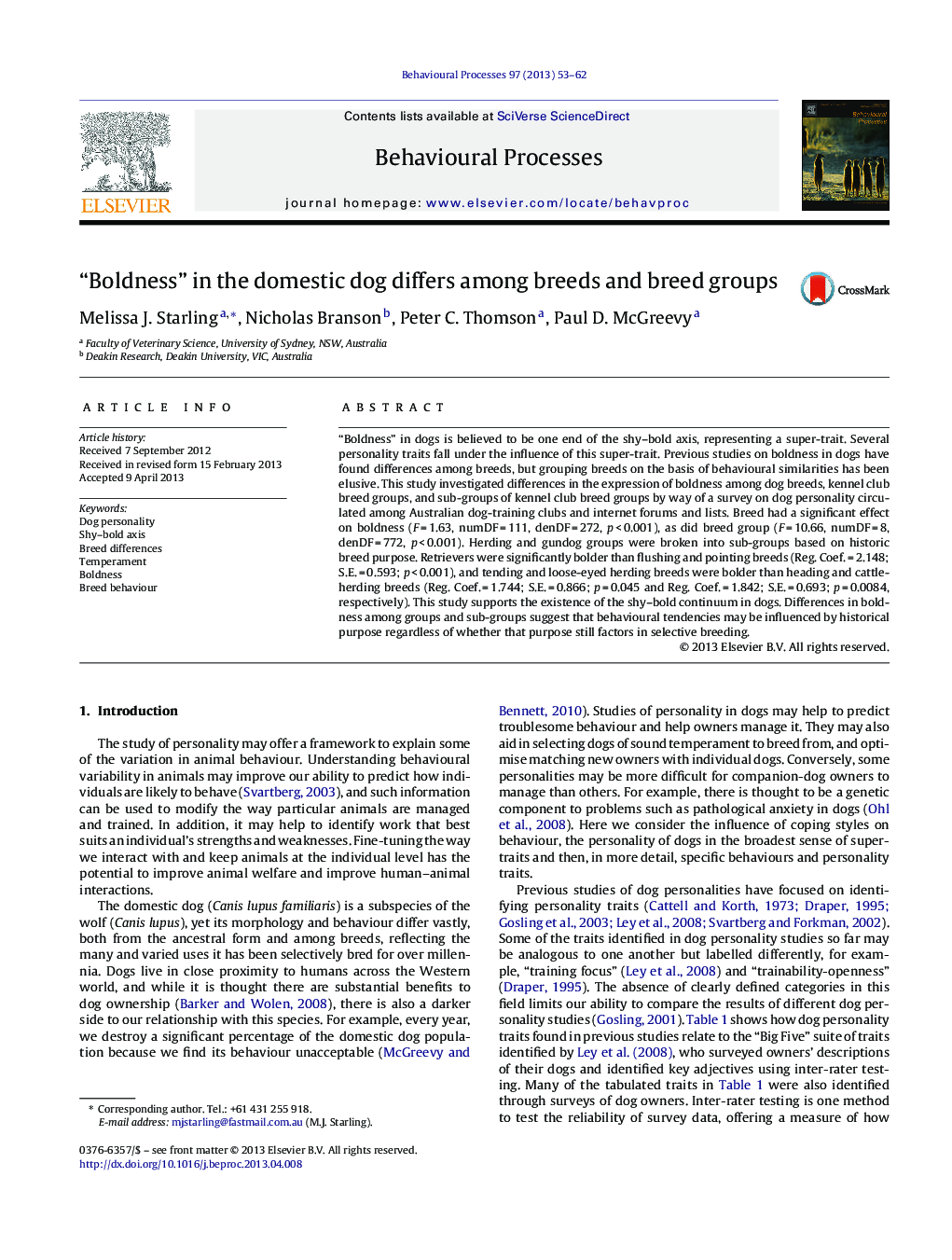| Article ID | Journal | Published Year | Pages | File Type |
|---|---|---|---|---|
| 2426890 | Behavioural Processes | 2013 | 10 Pages |
•Breed has a significant effect on boldness in dogs. Boldness scores for popular breeds are given.•Kennel club breed groups have a significant effect on boldness in dogs.•Sub-groups of breeds with a common specific purpose within breed groups differ in boldness.
“Boldness” in dogs is believed to be one end of the shy–bold axis, representing a super-trait. Several personality traits fall under the influence of this super-trait. Previous studies on boldness in dogs have found differences among breeds, but grouping breeds on the basis of behavioural similarities has been elusive. This study investigated differences in the expression of boldness among dog breeds, kennel club breed groups, and sub-groups of kennel club breed groups by way of a survey on dog personality circulated among Australian dog-training clubs and internet forums and lists. Breed had a significant effect on boldness (F = 1.63, numDF = 111, denDF = 272, p < 0.001), as did breed group (F = 10.66, numDF = 8, denDF = 772, p < 0.001). Herding and gundog groups were broken into sub-groups based on historic breed purpose. Retrievers were significantly bolder than flushing and pointing breeds (Reg. Coef. = 2.148; S.E. = 0.593; p < 0.001), and tending and loose-eyed herding breeds were bolder than heading and cattle-herding breeds (Reg. Coef. = 1.744; S.E. = 0.866; p = 0.045 and Reg. Coef. = 1.842; S.E. = 0.693; p = 0.0084, respectively). This study supports the existence of the shy–bold continuum in dogs. Differences in boldness among groups and sub-groups suggest that behavioural tendencies may be influenced by historical purpose regardless of whether that purpose still factors in selective breeding.
